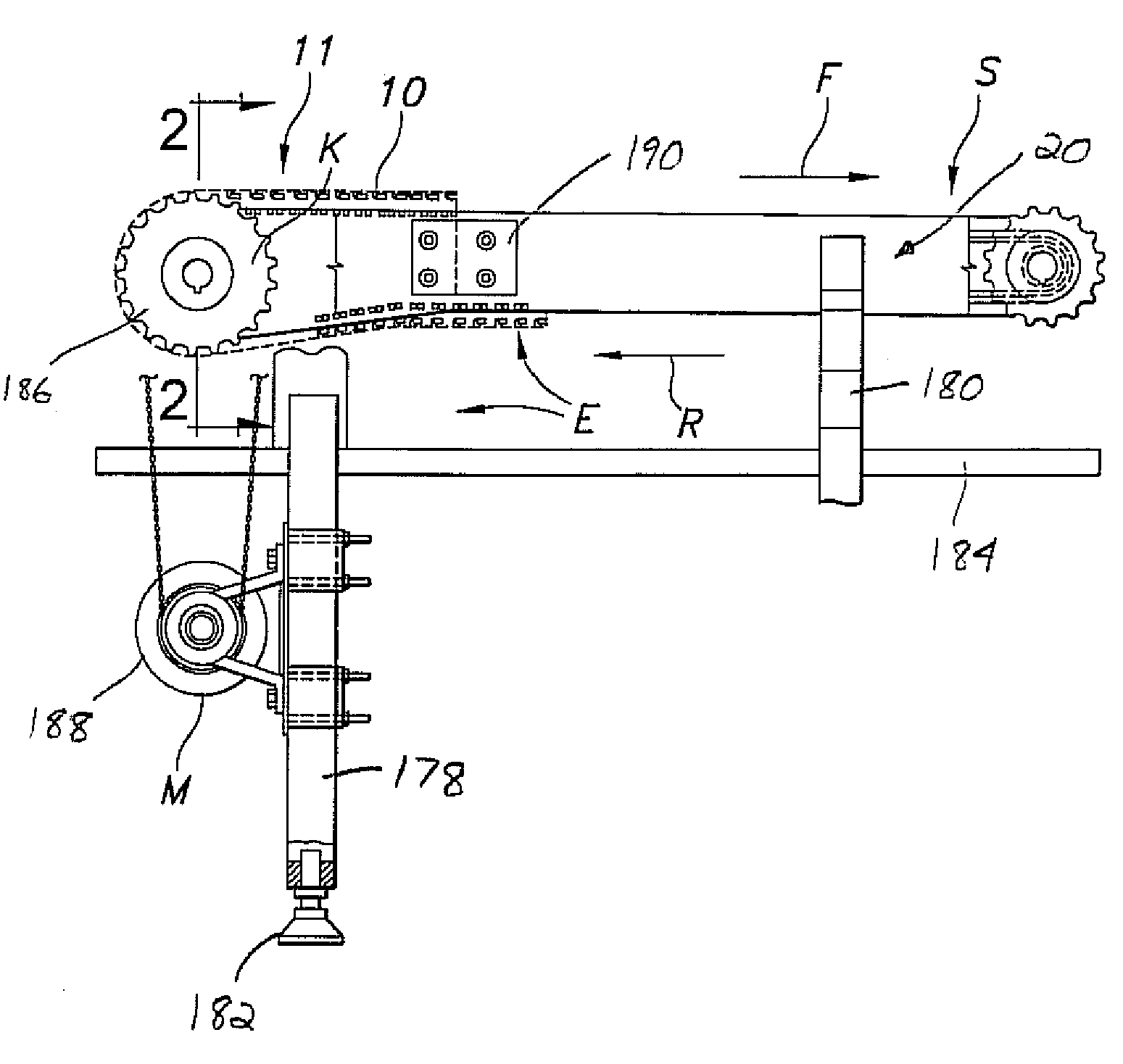Powder coating components to reduce friction, increase wear resistance, and improve cleanability
a technology of powder coating and friction reduction, applied in the field of tribological arts, can solve the problems of difficult removal, degrading the desirable corrosion-resistant surface, and affecting the appearance of black oxide, so as to improve wear resistance, reduce surface friction, and enhance the effect of wear resistan
- Summary
- Abstract
- Description
- Claims
- Application Information
AI Technical Summary
Benefits of technology
Problems solved by technology
Method used
Image
Examples
Embodiment Construction
[0041]Reference is now made to FIGS. 1 and 2, which depict one possible environment in which the various disclosed aspects of the present invention may have utility. These figures depict an overall conventional arrangement of a conveyor system S including a belt or chain 10. The chain 10 includes a wear surface, such as conveying surface 11, for engaging and supporting articles. In this particular embodiment, the chain 10 comprises or includes modular links including side guide links 12 and intermediate links 13 arranged in spaced apart rows (see FIG. 6 and note rows R1 . . . Rn), which thus partially create the conveying surface 11. Adjacent rows R1, R2 of links are interconnected by transversely extending connectors 14.
[0042]With regard to the side links 12, and as perhaps best understood by viewing FIGS. 3 and 4a-4c, each may include an outer depending arm 12a and an inwardly projecting or extending transverse tab 12b (thus creating different right handed or left handed side link...
PUM
 Login to View More
Login to View More Abstract
Description
Claims
Application Information
 Login to View More
Login to View More - R&D
- Intellectual Property
- Life Sciences
- Materials
- Tech Scout
- Unparalleled Data Quality
- Higher Quality Content
- 60% Fewer Hallucinations
Browse by: Latest US Patents, China's latest patents, Technical Efficacy Thesaurus, Application Domain, Technology Topic, Popular Technical Reports.
© 2025 PatSnap. All rights reserved.Legal|Privacy policy|Modern Slavery Act Transparency Statement|Sitemap|About US| Contact US: help@patsnap.com



